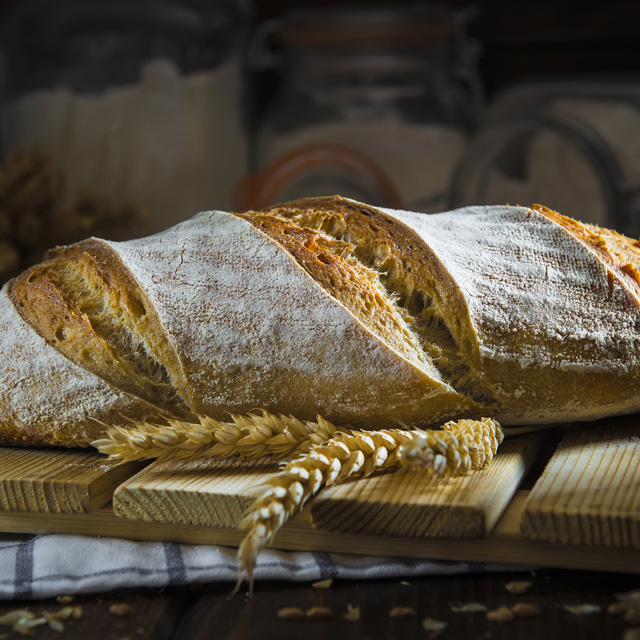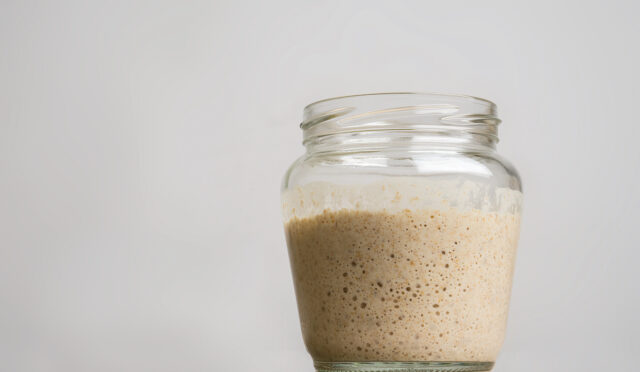
Sourdough, the Best Way to Raise Your Bread
Often when people talk about sourdough, a particular brown heavy loaf comes to mind. That sourdough is a type of bread is a misconception. It’s a way of fermenting that loaf, bun, roll or flatbread you’re enjoying. It’s the oldest way of fermenting dough. At least thirty centuries old. And it’s the yeast culture you should be using whenever you can.
What we now think of as yeast is a simple, well engineered monoculture. As far back as 5000 years ago the ancient Egyptians were using yeast to leaven bread. They paid now attention to the science behind the process and thought of it as a miracle. Throughout that region at that time and still today flatbreads are king. Though, of course from matzo to bolani, yufka to quistibi there remains a medley of unleavened, that is to say non-fermented breads that are wonderful accompaniments to meals in their own rights.
But leavened, of fermented breads are now a mainstay in most peoples diets throughout the world. It’s no accident as a good hearty slice of fluffy, chewy bread has a mouth-feel that can’t be beat and a way of satisfying the appetite that finishes of a meal really nicely. Not to mention, who doesn’t like to mop up a plate with the spongy goodness that good bread does so well.
The process of fermenting dough goes back at least as far back as the Egyptian times for bakers in Scandinavia. Where from the far north and into modern day France, Germany, Belgium and the Basque regions of Spain, the sourdough tradition carries on as a standard of many breads that started from times where borders were not known in what we no think of as Europe.
It’s travels to the ‘New World’ happened on two paths. French and Basque prospectors brought sourdough starter to the San Francisco area during gold rush, and Northern European immigrants baked heavier rye breads when they arrived on the east coast.
Barm, the Middle-man
Barm, a byproduct of beer and wine production, widely replaced sourdough as a fermenting agent from around the tenth century in Europe, but it is said to have first been used in baking in Iberia and Gaul around the first century. Though it is now rarely used, partly due to it’s difficulty to measure and maintain a solid even culture, and partly as it’s simple bostersome and messy, it’s worth mentioning that it had a good run. Monasteries, the original craft breweries, would use the scum off of the wine and ales they made to leaven flour and make tight, heavy loaves of breads using mainly rye and barley. The technical name for this yeast is Saccharomyces Cerevisiae, and has somewhat fallen out of favour in central and eastern Europe but is relatively widely used in Britain, where it is known as ‘brewer’s yeast’.
Louis, Louis Oh Yeah You Gotta Pasteurize
The final nail in the coffin for sourdough came in the 1857, when Louis Pasteur, yeah the pasteurization guy, isolated yeast as the key factor in the fermentation of alcohol. With this discovery, a single strain of ‘baker’s yeast’ far more stable than previously used ‘brewer’s yeast’ became the global standard of what all commercial mass-produced breads are made with today.
Sourdough Born Wild and Free
Sourdough is born of wild yeast spores and lactobacilli. Packed with ‘bugs’; an amazing 50 million yeasts and 5 billion lactobacilli bacteria in every teaspoon of starter. As lactobacilli convert sugars to lactic and acetic acid, the dough sours, and the ph levels drop sharply. Competing microorganisms are pretty much killed off at this level, but acid tolerant yeasts thrive and convert sugars into carbon dioxide and ethanol.
Not unlike kojikin the active yeast in dynamic in nature and as such vulnerable to changes in humidity and temperature, and like a the nukazuke bed described earlier, can last years. It is thought that just as an individuals microbes affect the culture of nuka so does the hands of the person or people who have worked with the initial dough that spawned the starters of other loaves.
A decent sourdough bread can be made in a day, but it’s generally best to rest the dough for two or three days. I can attest that the heavier the grains you add to the bread dough the longer you will have to wait for the fermentation to take hold. Because of a wonderful aspect of sourdough called ‘predigestion’ where the wild yeasts work with the lactobacilli to start digest the starches means less work for someone eating the bread themselves. In fact many people who complain of digestive problems when eating bread can enjoy a sourdough based bread with no problem. Phytic acid is the main culprit in digestive problems in bread which means you might not actually be gluten intolerant afterall, unless you’re from Oregon, in which case heaven help you and enjoy that $25 chocolate bar.
Like human civilization, bread cultures are dynamic, any change in environmental factors will alter the taste and texture of resulting bread. However the craft of bakers has an enormous influence as well. Personal choices in the base flours, additional seeds and flavourings added will impact not only the flavour but also the texture of your bread. As higher rye or barley ratios to wheat will require a longer ferment and rest to bring the bread up to an airy texture.
Share and Share Alike
Growing up in the simpler days of the 1980’s, not sure that they were simpler, but I was a kid and never had to worry about where my wifi was coming from, there was a bit of a boom in something called “friendship bread”. Which was basically a home-brewed sourdough starter. We used one from my aunt and two others from a Finnish and Ukrainian neibours. At the time I didn’t notice the subtleties as I mostly smothered them in peanut butter or drenched them in maple syrup.
There are many methods available online for husbanding your own sourdough starter and it’s worth looking into. It’s actually as simple as letting whole wheat flour and water mix sit around your house adding equal parts of wheat and flour every day for three or four days until the mix bubbles up and takes on a nice, subtle sour aroma. From this you can take out a few tablespoons to use to ferment a loaf or bread. To your starter you can introduce friendly bacteria such as yogurt to give it a bit of a boost.
Of course commercially available sourdough starters are widely available. A good start is the oldest retailer, which is still active with dozens of varieties available Sourdoughs International http://sourdo.com/
Good and Good For You
The health benefits of sourdough are quite remarkable. It is definitely worth mentioning again that the digestion problems many people complain of when eating bread come not from gluten but the phytic acids found in breads fermented with commercial yeast. Instead sourdough is high in lactic acid which digests easier and boosts minerals such as calcium, zinc, magnesium and potassium. As well as being high in E and B vitamins (B1 – B6 and B12) thiamin, niacin, folate, riboflavin.
Sourdough is the Universal Donor
It’s important not to forget that sourdough refers to the fermentation agent not the bread itself. Just like how in the west sake is often confused as being Nihonshu, whereas in Japanese sake just means booze. Meaning a sourdough starter can start any leavened bread.
So whether it’s a tortilla shell, one of the richer rye based breads (brots) of Germany, a bagel, a hotdog roll, a focaccia, pizza crust, or whatever needs a fermented boost to rise to the occasion, and make any sandwich that much better. Just remember it will take a little longer as sourdough does give off gas slower but ,as the enzymes in the dough take more time to break down the starches fermentation lasts longer resulting in a tastier bread. It’s a win-win situation.



